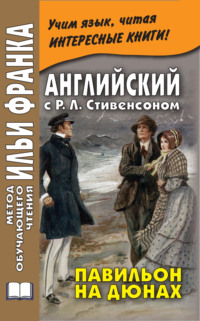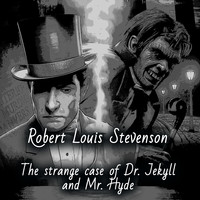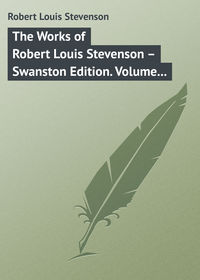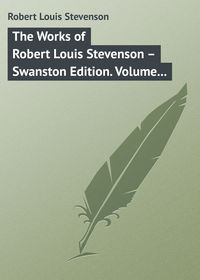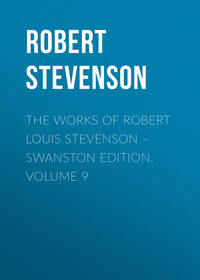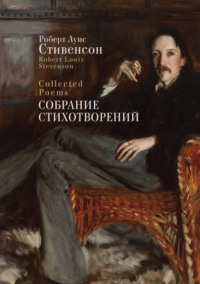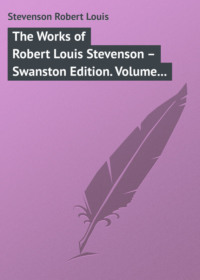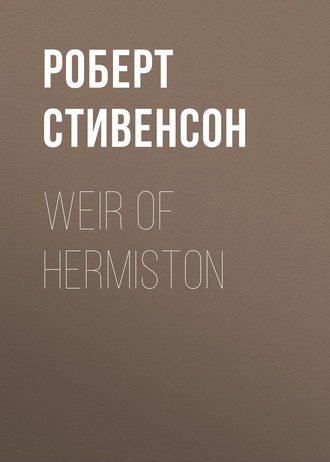 полная версия
полная версияWeir of Hermiston
There remains one more point to be mentioned, as to the speech and manners of the Hanging Judge himself. That these are not a whit exaggerated, in comparison with what is recorded of his historic prototype, Lord Braxfield, is certain. The locus classicus in regard to this personage is in Lord Cockburn’s Memorials of his Time. “Strong built and dark, with rough eyebrows, powerful eyes, threatening lips, and a low growling voice, he was like a formidable blacksmith. His accent and dialect were exaggerated Scotch; his language, like his thoughts, short, strong, and conclusive. Illiterate and without any taste for any refined enjoyment, strength of understanding, which gave him power without cultivation, only encouraged him to a more contemptuous disdain of all natures less coarse than his own. It may be doubted if he was ever so much in his element as when tauntingly repelling the last despairing claim of a wretched culprit, and sending him to Botany Bay or the gallows with an insulting jest. Yet this was not from cruelty, for which he was too strong and too jovial, but from cherished coarseness.” Readers, nevertheless, who are at all acquainted with the social history of Scotland will hardly have failed to make the observation that Braxfield’s is an extreme case of eighteenth-century manners, as he himself was an eighteenth-century personage (he died in 1799, in his seventy-eighth year); and that for the date in which the story is cast (1814) such manners are somewhat of an anachronism. During the generation contemporary with the French Revolution and the Napoleonic wars – or to put it another way, the generation that elapsed between the days when Scott roamed the country as a High School and University student and those when he settled in the fulness of fame and prosperity at Abbotsford, – or again (the allusions will appeal to readers of the admirable Galt) during the interval between the first and the last provostry of Bailie Pawkie in the borough of Gudetown, or between the earlier and the final ministrations of Mr. Balwhidder in the parish of Dalmailing, – during this period a great softening had taken place in Scottish manners generally, and in those of the Bar and Bench not least. “Since the death of Lord Justice-Clerk Macqueen of Braxfield,” says Lockhart, writing about 1817, “the whole exterior of judicial deportment has been quite altered.” A similar criticism may probably hold good on the picture of border life contained in the chapter concerning the Four Black Brothers of Cauldstaneslap, namely, that it rather suggests the ways of an earlier generation; nor have I any clue to the reasons which led Stevenson to choose this particular date, in the year preceding Waterloo, for a story which, in regard to some of its features at least, might seem more naturally placed some twenty-five or thirty years before.
If the reader seeks, further, to know whether the scenery of Hermiston can be identified with any one special place familiar to the writer’s early experience, the answer, I think, must be in the negative. Rather it is distilled from a number of different haunts and associations among the moorlands of southern Scotland. In the dedication and in a letter to me he indicates the Lammermuirs as the scene of his tragedy. And Mrs. Stevenson (his mother) tells me that she thinks he was inspired by recollections of a visit paid in boyhood to an uncle living at a remote farmhouse in that district called Overshiels, in the parish of Stow. But though he may have thought of the Lammermuirs in the first instance, we have already found him drawing his description of the kirk and manse from another haunt of his youth, namely, Glencorse in the Pentlands; while passages in chapters v. and viii. point explicitly to a third district, that is, Upper Tweeddale, with the country stretching thence towards the wells of Clyde. With this country also holiday rides and excursions from Peebles had made him familiar as a boy: and this seems certainly the most natural scene of the story, if only from its proximity to the proper home of the Elliotts, which of course is in the heart of the Border, especially Teviotdale and Ettrick. Some of the geographical names mentioned are clearly not meant to furnish literal indications. The Spango, for instance, is a water running, I believe, not into the Tweed but into the Nith, and Crossmichael as the name of a town is borrowed from Galloway.
But it is with the general and essential that the artist deals, and questions of strict historical perspective or local definition are beside the mark in considering his work. Nor will any reader expect, or be grateful for, comment in this place on matters which are more properly to the point – on the seizing and penetrating power of the author’s ripened art as exhibited in the foregoing pages, the wide range of character and emotion over which he sweeps with so assured a hand, his vital poetry of vision and magic of presentment. Surely no son of Scotland has died leaving with his last breath a worthier tribute to the land he loved.
S. C.



